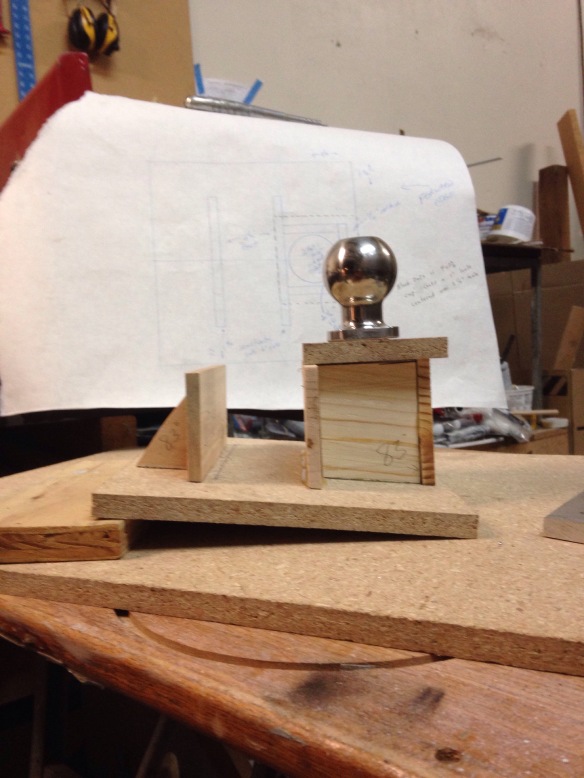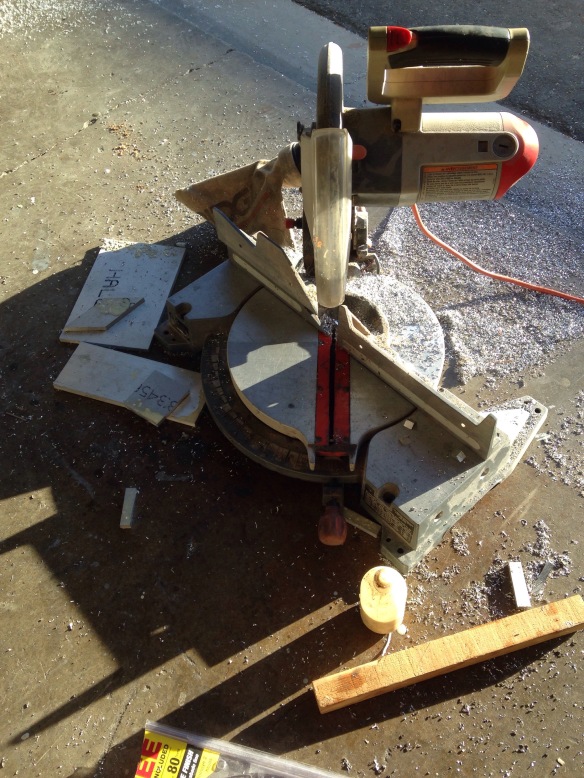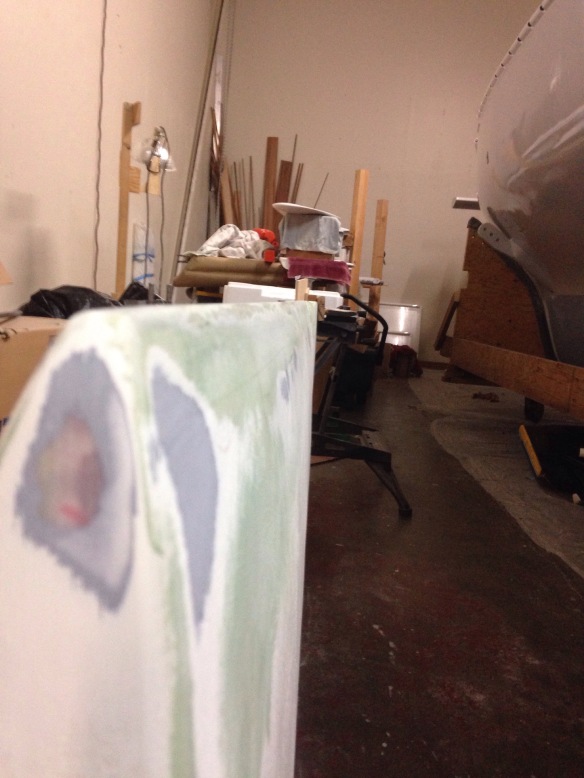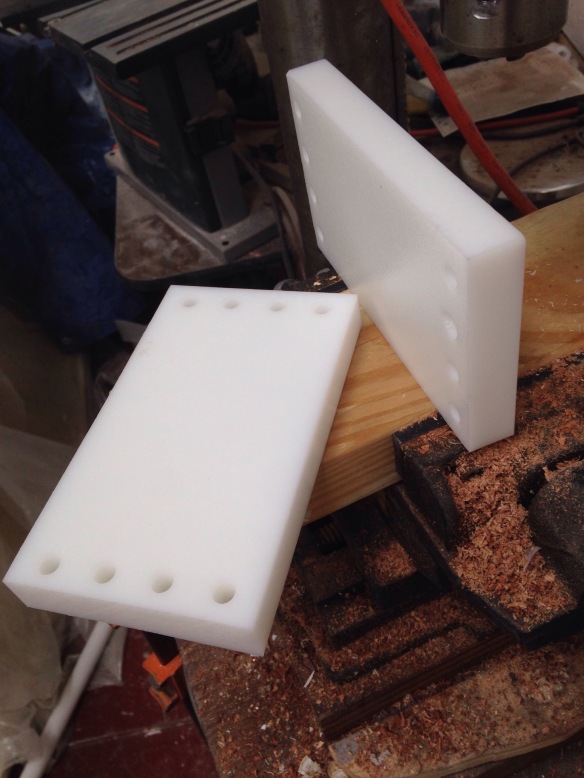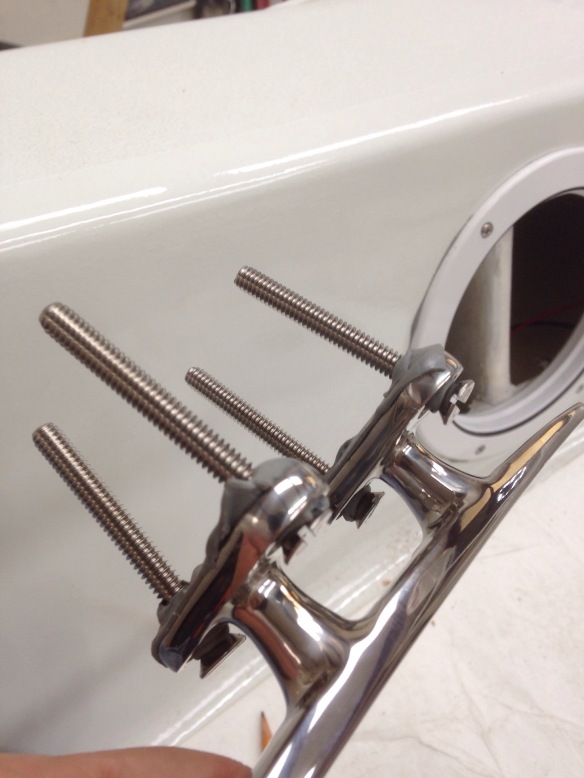Gratuitous cross promotion here as we can’t help but shout about niece Molly Carter’s high school varsity lacrosse team winning Northern California state tournament this week. The final game saw frequent scoring, lead changes, many minutes tied, capped with Novato breaking the 9-9 tie literally as time ran out to win the title. Fans rushing the field, dogpile of players, people crying – the whole enchilada. Molly played a lot of minutes as a freshman, so it’s big shoes to fill in the coming years :)
Here with her brother Mack and the champs medal.

Back at the shop we had a big weekend of putting stuff together. There are 7 thruhulls; 3 below the waterline and 4 drains for sinks and pumps. First some BoatLife bedding caulk…

Press them in, deal with the backing plates and nuts inside, and wipe away the excess goo. Came out fine.

The only regret is buying the mushroom head fittings instead of the flush heads. That call was made over a year ago because I was insecure about cutting the 45 degree chamfers. In retrospect it would have been pretty easy. So here’s a tiny bit of robbed speed we’ll suffer.

We’re also tackling any last fabrication parts, including this plate inside the cabin that holds the daggerboard down-force turning block inside the dagger trunk. This will get carefully sealed and primed to avoid electrolysis as much as possible.
Luis in Lisbon asked about the opening ports. These are Lewmar Flush Mitre #3s:
 they don’t really match with the wood trim inside, but we’ll love the ventilation and they look good blending in with the smoked Lexan from the outside. Also, these windows get more obscured by nice fabrics coming. Way to go Jeanne and Leslie for a whole Saturday of magic with foam blocking.
they don’t really match with the wood trim inside, but we’ll love the ventilation and they look good blending in with the smoked Lexan from the outside. Also, these windows get more obscured by nice fabrics coming. Way to go Jeanne and Leslie for a whole Saturday of magic with foam blocking.

Patterns are being made for these pretties…

Now that the labor for hardware is done, we’re happy to have invested extra time in making backing plates, cutting individual bolts to fit in to acorn nuts, etc. The trim is looking pretty good according to recent visitors.

I’ve only ignored Keith’s excellent advice once, which was him saying it’s not worth building a pulpit. I haven’t had good luck with schedules, costs, etc with welders, and since the mast base is out for ransom right now we decided to utilize on hand materials and knock this off the list with labor. It also means we can feel ok about it as an experiment, and modify/change sans-guilt later.
Grabbed some thin-wall (schedule 200) 1″ PVC plus 90degree PVC conduit bends and epoxy putty / light glassed them together. Decided to use the heavy carbon uni we had purchased to make a bow sprit long ago. And the leftover 5oz uni 2″wide roll for spiral hooping around the uni. Then cover it with a light fiberglass sleeve and this nifty shrink-wrap tubing from Soller Composites in New Hampshire (ok, we did spend about $30 on new materials for this project)

Here it is part way thru the heat gun process. The film shrinks 2:1, spurring away bubbles and leaving a nice surface.

Because these are working from a 45 degree bend, it was pretty easy to line up the foot cut and site these on the deck.

There is also a cross bar intersecting the forward slope tubes, ahead of the forestay. Along with structure strength, it will catch the lowered furled up reacher.
Tonight we’ll make a sheet of three layer 1708DB that can then be cut in to four of these ‘feet’

We’ll show you in a few days how the feet become bolting flanges on to the tubes.
Meanwhile, the daggerboard is getting a bit more shaping love. After applying Coz’s clever guide tool, we realized that the port size was a little flat compared to starboard. Now THAT would have slowed things down. So we’re being careful with this shaping job (that should have been done last year!)
If you’re following this story and want to be around at the beginning of the boat’s water life, come on out. The basics are:
Fri June 10: morning: drive beams trailer to Napa then set floats on ground at Napa Sea Ranch (launch site). Deliver mast to Napa Valley Marina (a few hundred yards away). Evening: take empty boat trailer to Santa Rosa and transfer main hull from shop dolly to boat trailer.
Sat June 11: drive main hull to SeaRanch. Lift and bolt beams to hull, on trailer. Lift floats up to waiting beams. Install engine and nets. Expect at least all day.
Sun June 12: finish boat assembly items. Go to marina and dress the mast (halyards, diamonds, shrouds, etc)
Launch the boat!
Monday June 13: motor to Napa Marina for mast stepping.
Go sailing, God willing.
Let us know if you want to details/directions/a role in the process.
The new boat will first dock at Charlie’s house on the Napa River, and within a few days make its way into the bay for a summer dock. Probably in Richmond but we’re still poking around. There will be MANY “sea trials” sailing days and you’re all welcome to come along. We’ll be posting times via this blog, so sign in for updates if you haven’t already.
18 days to go. And the list is still long. I have an evening of tanks and hoses to go join together!





















